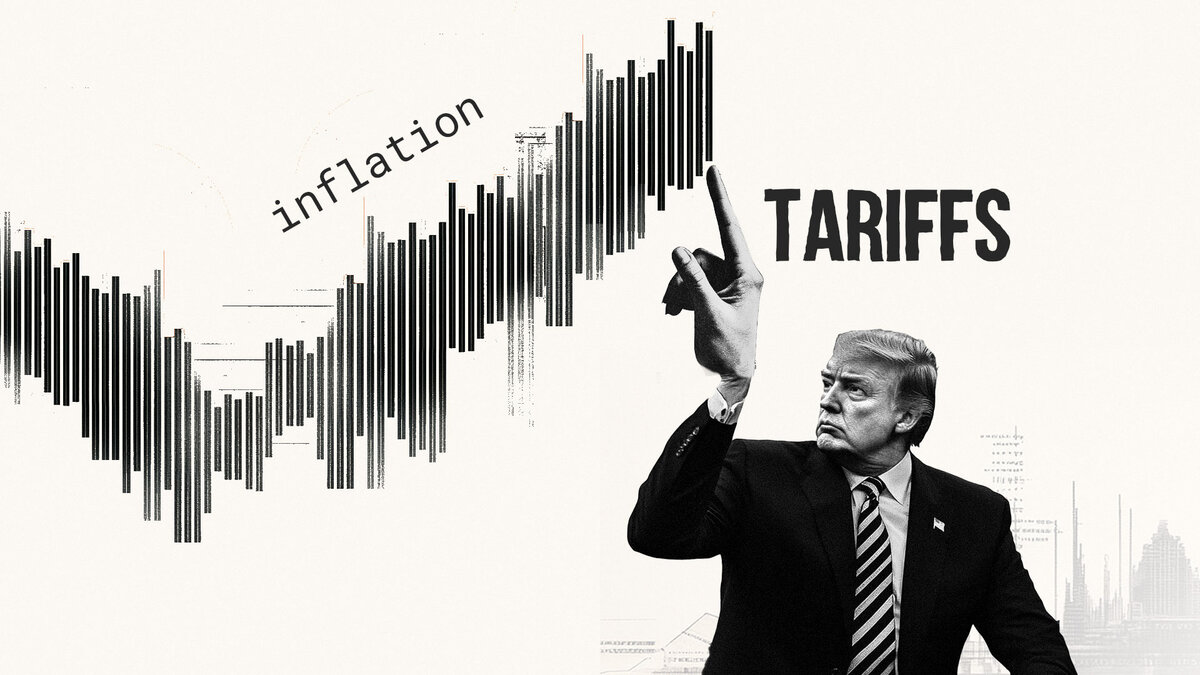Week ahead: “Reciprocal tariffs” the volatility generator ?

Markets
I’ve been around the block long enough to recognize a volatility generator when I see one—and Trump’s latest tariff barrage is a full-blown macro hand grenade. The 25% blanket tariff on imported vehicles isn’t just a policy pivot—it’s a seismic event for global supply chains and inflation watchers alike. For perspective, 8% of U.S. households don’t own a car today—but that number could spike sharply once sticker shock hits the lot.
While details are still getting hammered out for Canada and Mexico, we're working off the assumption that the average tariff hit on Canadian-assembled vehicles lands around 12.5%. Even that is enough to send shudders through a deeply integrated North American auto supply chain. Prime Minister Carney didn’t mince words—he called it a direct attack on Canadian workers, and frankly, I can’t argue with that. We’ve now exited the free-trade zone and entered the tit-for-tat trenches.
Let’s be real: U.S. car prices are heading higher. The supply-demand math is brutal. Last year, the U.S. assembled 10.75 million vehicles and consumed 16.07 million. Even netting out exports, you’ve got a shortfall of over 5 million units. And sure, the White House is trying to spin this as a renaissance moment for domestic production—but cranking up capacity utilization from February’s 68.4% to the 84% high-water mark of the past 25 years? That’s a pipe dream in the near term. Even if achieved, you’re still facing a gaping supply deficit.
Plus, many popular makes and models simply aren’t produced stateside. Re-shoring those lines will take years and billions in capex—not to mention regulatory certainty, which is the one thing markets aren’t getting right now. Meanwhile, automakers will face a very binary choice: eat margin or pass the cost to the consumer. You don’t need a PhD in economics to guess how that story ends.
So yes, we’re bracing for a 10% spike in auto prices, and that’s likely to shave around 5% off unit sales, putting us at an estimated 15 million this year. The knock-on effects for CPI aren’t trivial either. With motor vehicles making up a hefty 6.7% of the index, even a modest shock can ripple through headline and core inflation alike.
That brings us to last week’s macro tape: February’s core PCE deflator printed a hotter-than-expected +0.37%, pushing the YoY rate to 2.8%. Not a breakout, but certainly no progress. Meanwhile, 5-year inflation expectations in the latest University of Michigan survey spiked to 4.1%—a 32-year high. This isn’t noise. It’s signaling.
Markets are still holding out hope for two Fed cuts this year, and that’s based on the assumption that the trade war will deliver a meaningful blow to growth. And that’s exactly what we’re beginning to see play out. The budding equity rebound fizzled fast, with the S&P 500 closing the week 1% lower, now nearly 9% below its February peak. Bond yields are dancing to a chaotic rhythm—caught between softening growth and sticky inflation. Ten-year Treasuries closed the week near 4.3%, after testing 4.4% mid-week.
FX markets? Caught in a classic push-pull with bonds. The dollar initially flexed higher—standard playbook stuff to offset tariff pain—but with the U.S. now looking like the epicenter of policy risk, that move has fizzled. The greenback barely held its ground last week
Bottom line: We’re deep in the fog. The trade war headlines are coming in hot, smothering macro signals and sidelining the Fed narrative. If you’re trying to chart a path through this chaos, good luck. The data calendar might say NFP, but right now, markets are flying IFR—Instrument Flight Rules—and the only thing lighting the runway is Trump’s tariff timeline.
Oil markets
As a hardened oil bear (chalk that up to my Bay Street days, where every CAD trader cuts their teeth on crude), I’ve got to admit—I didn’t see March’s Brent pop north of $72 coming. But scratch beneath the surface and the supply-side squeeze does check a few boxes. That said, I wouldn’t get too comfortable up here. If the soft data keeps souring and the hard U.S. numbers roll over, crude’s next move could be a swift descent. Demand destruction doesn’t send a warning text—it just hits the bid.
Let’s not kid ourselves—this wasn’t some roaring demand revival. It’s geopolitical risk premium, plain and simple. Trump’s tariff bazooka is now zeroed in on energy importers from the "naughty list," that buys buy Venusula oil. Sure, Caracas doesn’t swing global balances on its own, but in this market, headlines rule the tape. Traders are jumpy, hedgers are crowding the front-end, and CTAs are dancing on momentum triggers. The question now is: who’s next in the crosshairs?
Remove even a modest chunk of sanctioned barrels from the mix—layered on top of Iranian tightness and Canadian bottlenecks—and you’ve got a textbook supply squeeze. No demand boost is needed.
Could OPEC+ step in as the swing producer? Sure—but don’t expect them to flood the tape without Brent flashing $ 80’s digits. Meanwhile, U.S. shale isn’t riding to the rescue. Gone are the days of drill-baby-drill; E&Ps are worshipping at the altar of capital discipline. Investors want dividends, not derricks.
Now pan out. The broader market’s already rotating into second-order tariff effects—slower capex, tighter margins, and increasingly jittery consumers. That’s your canary. If sentiment keeps sliding and business investment stalls, real demand will buckle—and when it does, oil won't stick around for a second take. It’ll gap lower on the open.
So, sure—April 2 might be branded as “Liberation Day,” but for oil bulls riding this latest bid, it’s looking more like “Correction Day.” Be nimble, be hedged… and don’t say I didn’t warn you.
Forex markets
“Liberation Day” looms: FX market poised for a volatility jolt
Let’s be clear—April 2 isn’t just another calendar event. It’s “Liberation Day,” as dubbed by Trump himself, and markets are tiptoeing around it with the kind of caution reserved for live wires. The U.S. president is set to unveil his long-teased “reciprocal tariffs,” and the FX complex is stuck in idle—low conviction, low volume, and no one really wants to front-run the headline risk.
Tariffs: A known unknown
Despite a 25% global tariff on autos and auto parts already set to kick in April 3, the DXY has barely flinched. Outside of SEK, no G10 currency has moved more than 1% against the dollar. That tells you everything: pricing the unknown is nearly impossible when the tariff rubric itself is undefined. Are we talking about tariff differentials? VAT gaps? FX misalignments? Non-tariff barriers? The Trump administration is tossing the kitchen sink into the justification playbook, and no one knows which metric will anchor policy.
But one thing is clear: countries with yawning trade gaps versus the U.S. are most at risk. Think of this as a “deficit-adjusted tariff regime”—and Asia is ground zero. Of the 21 countries under USTR scrutiny, 9 are in Asia, and that’s where we expect the sharpest FX repricing.
FX strategy: Stay nimble, stay lean
I kept my positioning light heading into the weekend—long EURCAD via two legs (EUR long, CAD short), but this is a tester trade. That said, I’m watching Monday’s IMF COFER data for potential FX reserve composition shifts—particularly signs of reserve managers rotating out of USD. If gold flows and central bank buying trends are any indication, the broader USD story may already be fraying at the edges.
Heavy Oil, heavy risks
Meanwhile, Western Canadian Select is quietly elbowing higher into week’s end, with the WCS-WTI spread tightening to just over $10/bbl—far below its $15/bbl average. This tightening isn’t just technical—it’s supply-chain geopolitics at work. Mexican exports are falling, Russian and Iranian flows are getting squeezed, and now Venezuela’s in the crosshairs again. The market is tightening under the radar, and the WCS strength is a good barometer of how resilient Canada’s energy exports are in the face of headline risk. ( more on this below)
Complacency is a bad word
Still, let’s not get lulled into complacency. If April 2 unleashes a full-spectrum tariff barrage—particularly across Asia—you can bet USD safe-haven demand will come roaring back against the Asia FX basket. I’m selectively positioned here: still long USDCNH, but I cut my USDTHB earlier last week given the relentless gold bid, which continues to bolster the Baht. Let’s be real—Trump’s playbook has always been a high-octane mix of shock-and-awe followed by a tactical walk-back. But this time around, with geopolitics heating up markets may not be granted that usual grace period. The risk here isn’t just directional—it’s velocity.
What I’m watching:
- April 2 tariff release: scope, scale, and spin.
- IMF COFER report on Monday: any cracks in the USD’s reserve dominance?
- CAD and WCS spread—any further repricing ahead of potential energy carveouts?
- Nonfarm payrolls: does labor market momentum finally crack?
Bottom line: This isn’t just about tariffs anymore. It’s about the ripple effects—on inflation, consumer confidence, corporate margins, and ultimately, the Fed’s calculus. For now, I’m staying light, tactical, and one headline away from flipping risk. And if things break wrong—don’t say I didn’t warn you.
My game plan
My original game plan was to head into “Liberation Day” riding a long dollar position—but I’ve put short EURUSD on ice until I get a look at Monday’s IMF reserve composition release (through December). That data drop could be a tell, particularly if we start to see shifts away from the dollar that align with the gold narrative. Until then, I’m running a test trade: long EUR and short CAD in two separate legs, effectively giving me EUR/CAD exposure. It’s light and exploratory—I’m not deep in the money, and I’ll likely cut, especially if the CAD side of the tariff ledger ends up surprisingly lenient. But still long USDCNH.
That said, I’ve been digging into the CAD side over the weekend, and it’s hard to ignore that Canadian heavy crude is holding up far better than expected. Western Canadian Select (WCS) finished the week with a tighter-than-usual spread to WTI—just over US$10/bbl vs. a long-run average closer to $15. That’s a sharp reversal from the February panic when Trump floated a 25% tariff on Canadian energy. The walk-back to 10% didn’t just ease tensions—it also acknowledged the uncomfortable reality that U.S. Midwest refiners are hooked on Canada’s high-sulfur crude.
WCS is catching a bid from a classic triple-whammy squeeze in global heavy oil supply. One: Mexican barrels are getting rerouted domestically as output is funneled into the Olmeca refinery. Two: sanctioned flows from Russia and Iran are tightening global availability—Chinese teapots are reportedly backing off Russian cargoes, and even India just rejected a Russian tanker last week. Three: Venezuela is back in the crosshairs. Trump’s threat of a 25% tariff on countries buying Venezuelan crude has the makings of a full-on supply shock, especially if Chevron is eventually forced to exit. That alone could clip U.S. imports by 300k bpd.
So, while CAD might look soft from a trade risk and macro growth perspective, the heavy crude spread resilience is giving it a bit of backbone—something I need to keep front of mind as I calibrate exposure. Still, these are just scout trades. If the IMF data hints at a broader dollar de-risking trend, I’ll pivot harder into euro longs.
I do, however, like the long USDCAD as well… and I actually recommend it as a core trade to my colleagues. Hopefully, I don’t end up with egg on my face.
Author

Stephen Innes
SPI Asset Management
With more than 25 years of experience, Stephen has a deep-seated knowledge of G10 and Asian currency markets as well as precious metal and oil markets.

















